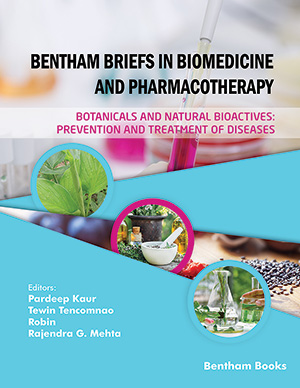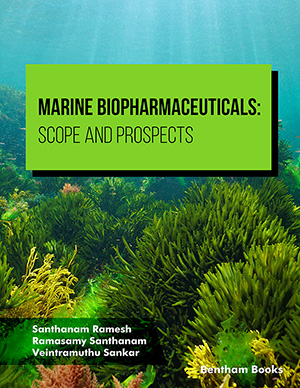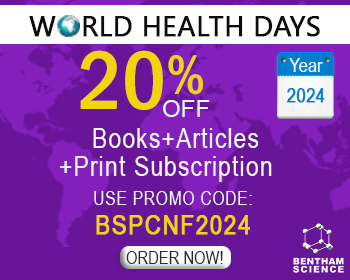Abstract
The Gonadotropin-Releasing Hormone (GnRH) exists in two isoforms, GnRH-I and GnRH-II, in most vertebrates, including humans. Both of these isoforms and their respective receptors have been found in many healthy and pathologic extra nervous system tissues, such as cells found in cancers of the reproductive systems and, in particular, in breast cancer. GnRH analogues are used as therapeutic agents in the case of sex-hormone-dependent tumours. Besides acting as suppressors of steroidogenesis, GnRH analogues seem to interfere with mitogenic signal transduction pathways, thus behaving as negative regulators of tumour growth and progression.
GnRH analogues counteract the proliferating effects of both epidermal growth factor (EGF) and insulin like growth factor (IGF-I); additionally, it affects the mitogen-activated protein kinase (MAPK) cascade and modulates the activity of the urokinase-type plasminogen activator (uPA)/plasminogen activator inhibitory (PAI) system, which is involved in the process of metastasis. In addition, GnRH analogues decrease the expression of many growth factors involved in the development of human uterine myomas (as well as endometriotic tissue), such as the vascular endothelial growth factor (VEGF), which is deeply implied in the angiogenesis of many benign and malignant tumours, including breast cancer.
Angiogenesis is one of the primary processes leading to the progression and metastasis of breast cancer cells, and a key therapeutic goal in the fight against tumours is the blocking of new vessel sprouts. Given these premises, this review provides an update on the background of anti-neoplastic properties of GnRH analogues..
Keywords: Angiogenesis, domestic animals, fibrosis, GnRH analogues, GnRH receptor, growth factors, kisspeptin, mammary tumours, metastasis, VEGF
Current Medicinal Chemistry
Title: The Pharmacological Pathways of GnRH Mediating the Inhibition of Mammary Tumours: Implications in Humans and Domestic Animals
Volume: 19 Issue: 7
Author(s): A. Rizzo, M. Spedicato, M. Mutinati, G. Minoia, R. Patruno, G. Ranieri and R. L. Sciorsci
Affiliation:
Keywords: Angiogenesis, domestic animals, fibrosis, GnRH analogues, GnRH receptor, growth factors, kisspeptin, mammary tumours, metastasis, VEGF
Abstract: The Gonadotropin-Releasing Hormone (GnRH) exists in two isoforms, GnRH-I and GnRH-II, in most vertebrates, including humans. Both of these isoforms and their respective receptors have been found in many healthy and pathologic extra nervous system tissues, such as cells found in cancers of the reproductive systems and, in particular, in breast cancer. GnRH analogues are used as therapeutic agents in the case of sex-hormone-dependent tumours. Besides acting as suppressors of steroidogenesis, GnRH analogues seem to interfere with mitogenic signal transduction pathways, thus behaving as negative regulators of tumour growth and progression.
GnRH analogues counteract the proliferating effects of both epidermal growth factor (EGF) and insulin like growth factor (IGF-I); additionally, it affects the mitogen-activated protein kinase (MAPK) cascade and modulates the activity of the urokinase-type plasminogen activator (uPA)/plasminogen activator inhibitory (PAI) system, which is involved in the process of metastasis. In addition, GnRH analogues decrease the expression of many growth factors involved in the development of human uterine myomas (as well as endometriotic tissue), such as the vascular endothelial growth factor (VEGF), which is deeply implied in the angiogenesis of many benign and malignant tumours, including breast cancer.
Angiogenesis is one of the primary processes leading to the progression and metastasis of breast cancer cells, and a key therapeutic goal in the fight against tumours is the blocking of new vessel sprouts. Given these premises, this review provides an update on the background of anti-neoplastic properties of GnRH analogues..
Export Options
About this article
Cite this article as:
Rizzo A., Spedicato M., Mutinati M., Minoia G., Patruno R., Ranieri G. and L. Sciorsci R., The Pharmacological Pathways of GnRH Mediating the Inhibition of Mammary Tumours: Implications in Humans and Domestic Animals, Current Medicinal Chemistry 2012; 19 (7) . https://dx.doi.org/10.2174/092986712799320745
| DOI https://dx.doi.org/10.2174/092986712799320745 |
Print ISSN 0929-8673 |
| Publisher Name Bentham Science Publisher |
Online ISSN 1875-533X |
Call for Papers in Thematic Issues
Advances in Medicinal Chemistry: From Cancer to Chronic Diseases.
The broad spectrum of the issue will provide a comprehensive overview of emerging trends, novel therapeutic interventions, and translational insights that impact modern medicine. The primary focus will be diseases of global concern, including cancer, chronic pain, metabolic disorders, and autoimmune conditions, providing a broad overview of the advancements in ...read more
Cellular and Molecular Mechanisms of Non-Infectious Inflammatory Diseases: Focus on Clinical Implications
The Special Issue covers the results of the studies on cellular and molecular mechanisms of non-infectious inflammatory diseases, in particular, autoimmune rheumatic diseases, atherosclerotic cardiovascular disease and other age-related disorders such as type II diabetes, cancer, neurodegenerative disorders, etc. Review and research articles as well as methodology papers that summarize ...read more
Chalcogen-modified nucleic acid analogues
Chalcogen-modified nucleosides, nucleotides and oligonucleotides have been of great interest to scientific research for many years. The replacement of oxygen in the nucleobase, sugar or phosphate backbone by chalcogen atoms (sulfur, selenium, tellurium) gives these biomolecules unique properties resulting from their altered physical and chemical properties. The continuing interest in ...read more
Current advances in inherited cardiomyopathy
Describe in detail all novel advances in multimodality imaging related to inherited cardiomyopathy diagnosis and prognosis. Shed light to deeper phenotypic characterization. Acknowledge recent advances in genetics, genomics and precision medicineread more
 24
24
- Author Guidelines
- Graphical Abstracts
- Fabricating and Stating False Information
- Research Misconduct
- Post Publication Discussions and Corrections
- Publishing Ethics and Rectitude
- Increase Visibility of Your Article
- Archiving Policies
- Peer Review Workflow
- Order Your Article Before Print
- Promote Your Article
- Manuscript Transfer Facility
- Editorial Policies
- Allegations from Whistleblowers
- Announcements
Related Articles
-
Role of MMPs in Metastatic Dissemination: Implications for Therapeutic Advances
Current Pharmaceutical Biotechnology Therapeutics Interventions with Anti-Inflammatory Creams in Post Radiation Acute Skin Reactions: A Systematic Review of Most Important Clinical Trials
Recent Patents on Inflammation & Allergy Drug Discovery Aptamers in Drug Design: An Emerging Weapon to Fight a Losing Battle
Current Drug Targets Computer Modeling of Brain Tumor Growth
Mini-Reviews in Medicinal Chemistry Sustained Delivery of Tamoxifen from a Nanofluidic Delivery Platform
Drug Delivery Letters Novel Antitumor Strategies Using Cytokine PEDF for Prostate Cancer Therapy
Current Angiogenesis (Discontinued) γ-Secretase Substrates and their Implications for Drug Development in Alzheimer's Disease
Current Topics in Medicinal Chemistry Quality Survival with Advanced Cervical Cancer
Current Women`s Health Reviews Mechanisms and Immunological Roles of Apoptosis in Molluscs
Current Pharmaceutical Design Colorectal Carcinogensis and Suppression of Tumor Development by Inhibition of Enzymes and Molecular Targets
Current Enzyme Inhibition Turning Tumor-Promoting Copper into an Anti-Cancer Weapon via High-Throughput Chemistry
Current Medicinal Chemistry Increased Toxicity of Doxorubicin Encapsulated into pH-Responsive Poly(β-Amino Ester)-Functionalized MCM-41 Silica Nanoparticles
Current Drug Delivery The Inhibitor of Growth (ING) Gene Family: Potential Role in Cancer Therapy
Current Cancer Drug Targets Synthesis of Novel Fused Heterocyclic Compounds from 7-amino-[1,2,4]triazino[3,4- b][1,3,4]thiadiazine-8-carbonitrile
Current Organic Synthesis Rhein Derivatives, A Promising Pivot?
Mini-Reviews in Medicinal Chemistry Comparison of Radiohaloanalogues of Meta-Iodobenzylguanidine (MIBG) for a Combined Gene- and Targeted Radiotherapy Approach to Bladder Carcinoma
Medicinal Chemistry Hypomethylation and Activation of Syncytin-1 Gene in Endometriotic Tissue
Current Pharmaceutical Design Fructooligosaccharides of Edible Alliums: Occurrence, Chemistry and Health Benefits
Current Nutrition & Food Science Advances in Efficient Health Communication: Promoting Prevention and Detection of STDs
Current HIV Research Patents on Nanoparticulate Drug Delivery Systems - A Review
Recent Patents on Drug Delivery & Formulation























